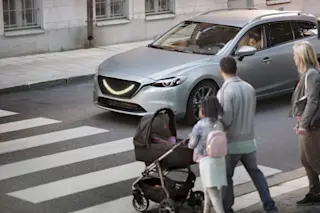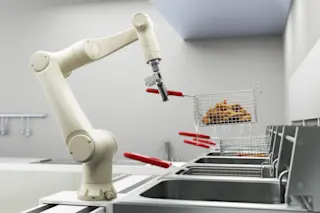Future self-driving cars could smile to let pedestrians know it's OK to cross the street. Credit: Semcon Many people crossing the road engage in the simple pedestrian ritual of making eye contact with drivers waiting in their cars at the intersection. But a video shows baffled pedestrians pausing when they see a driver reading the newspaper or sleeping at the wheel. Such confusion could become more common as growing numbers of people cross paths with self-driving cars. The usual ritual of exchanging looks between pedestrians and drivers is likely to become endangered as self-driving cars free up human drivers to do anything but pay attention to the road. That is why Semcon, an international technology company that specializes in product development, came up with the possible solution of giving self-driving cars a front-end display that allows them to "smile" at pedestrians. The smiling car concept is just one possible way ...
Smiling Self-Driving Cars Could Put Pedestrians at Ease
Discover how self-driving cars communication can improve pedestrian safety and trust in driverless vehicles through innovative designs.
More on Discover
Stay Curious
SubscribeTo The Magazine
Save up to 40% off the cover price when you subscribe to Discover magazine.
Subscribe













